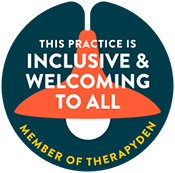Come as you are: the real story on how therapy heals and people grow
- Lindsay Perry, LPC
- Oct 19, 2021
- 3 min read

There are many misconceptions about what therapy, or counseling can do. (Throughout this blog, I use ‘counseling’ and ‘therapy’ interchangeably). Some think that therapy is supposed to “fix” their problems or “cure” their sadness. Others ask the valid question of “how is just talking going to help me?”. I hope this blog will clear up some of the inaccuracies about therapy and provide a better picture of how the counseling process works.
No guarantees and no promises
It is important to know that while most therapists are doing everything they can to be helpful to their clients, there are no guarantees or promises that counseling will help in the way a client may be expecting. Counseling and therapy can have many benefits, including feeling less stressed, anxious, or depressed; and feeling more peace, joy, and fulfillment. Although these benefits exist, therapy is a process. At times the process can be challenging and create more distress. This is a natural and expected part of the healing process, as it means that the pain or experience is actually being addressed vs avoided, numbed, etc.
It may get worse before it gets better
Often when someone starts therapy for the first time, they are coming in because the ways in which they’ve dealt with life aren’t working anymore. These habitual ways of being cause symptoms, such as anxiety, depression, stress, fatigue, etc. An important part of the healing process is helping clients see how old ways of functioning are more harmful than helpful. This then leads to aiding clients in learning how to manage through life using more effective ways of coping. This re-learning can be difficult to do. The difficulty comes from dealing with the pain that the old ways of functioning were trying to protect the client from. The inherent struggle that comes from learning to do life in a new way is purposeful and is a sign of progress.
What a therapist does and doesn’t do
The most common misconception is that a therapist will give a client advice on how to solve their problem, or that the therapist has all the answers. This just isn’t true. While a counselor has extensive knowledge and training about the process of therapy and how to help, every client is different and comes in with their own unique experiences. Therapy is complex, evolving, and cannot be predicted or put in a box of “here’s the exact thing to do to get rid of your anxiety”. Since every client and therapist is unique, each counseling process will also be unique. The education and knowledge of a therapist is a guide into understanding what is going on and what will be helpful. However, it’s not perfect and not a “one size fits all”.
More than ‘just talking’
Talking is the way in which therapy happens, but it’s not where the healing comes from. Healing comes from being seen, heard, and given the space to work through what needs to be worked through. It comes from having another person in the room who genuinely cares about how the client is doing, and wants them to do well in the face of what’s going on. This is the space to learn how to manage and struggle better. This holding space for clients to be and be seen is where growth happens.
Roles in therapy
You know the phrase “It takes two to tango”? Well, the same can be said for the therapeutic process. The therapist and client both have a role in the relationship. The therapist’s role is being actively open, present, listening, guiding, challenging, and holding space for what the client brings in. The primary role of the client is to be open to the process, but also to be open to their own awareness of where they are and what they need. It helps the therapeutic process and relationship when clients are open to the observations, feedback, and guidance of the therapist. That being said, the therapist isn’t always right. At times, they can misinterpret or be off about something being shared. This happens because, well, therapists are humans too, and make mistakes sometimes. The important piece here is openness on the part of the therapist and client. The more open and honest both are in the process, the more meaningful the work, and the better the outcome.
I hope this blog helped bring some clarity to the misconceptions of therapy and give a more realistic picture of what the process looks like.
If you have any questions or you’re thinking of starting your therapy journey, call (832) 639-4043 for a consultation or email info@groundedintruthcounseling.com for more information.
Interested or want to know more? Check out the video below of Dr. Emily Anhalt's video of Why You Should Try Therapy Yesterday


Comments